Sourdough Cinnamon Roll Focaccia Bread Recipe
Sourdough cinnamon roll focaccia bread is the ultimate fusion of soft, pillowy focaccia bread with sweet cinnamon and sugar for a fun twist on a bread that’s usually made savory.
This cinnamon roll focaccia sourdough recipe combines the flavor of traditional cinnamon rolls with sourdough focaccia bread for a bread that has the cinnamon goodness like my sourdough cinnamon rolls with the ease and lightness of sourdough focaccia bread.
This post may contain affiliate links. As an Amazon Associate, I may receive a small commission, at no cost to you, if you make a purchase. Please read our disclosure policy.
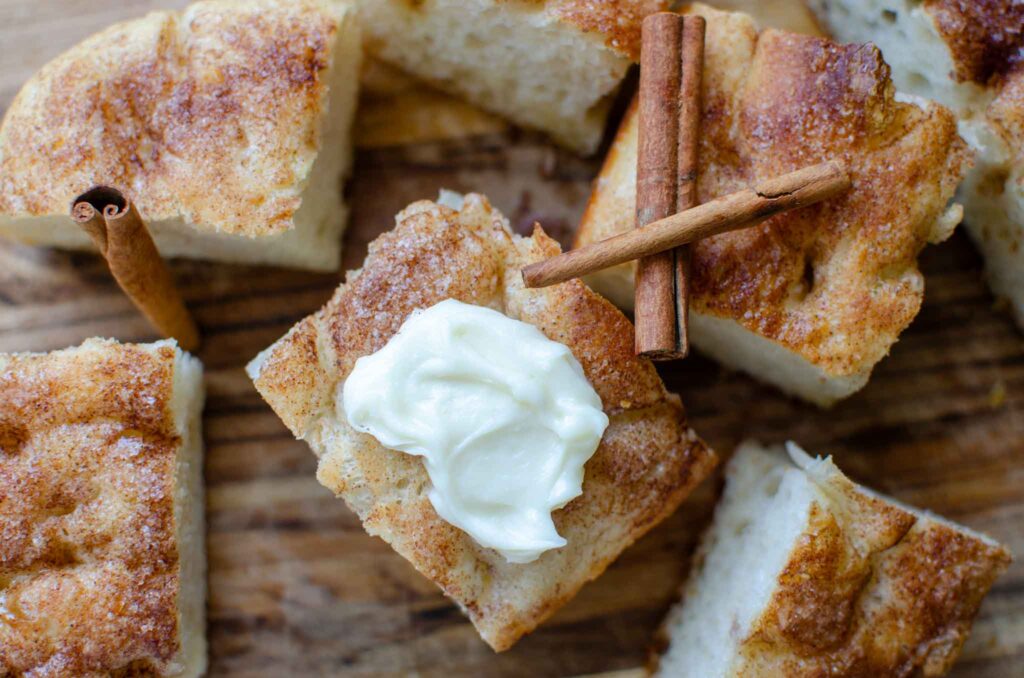
This focaccia bread recipe is a high hydration dough, meaning it has a high ratio of water to flour by weight. Just like my sourdough ciabatta bread, this is a sticky dough and more slack than other traditional bread doughs.
Use an active sourdough starter and enjoy the benefits of a long ferment with easy overnight instructions. Short on time? Make sourdough cinnamon roll focaccia with discard for that same great sourdough tang utilizing commercial yeast for its lift. This option won’t utilize all of the health benefits of a long ferment, but your focaccia bread will have a slight sourdough flavor to add another layer of complexity and flavor.
What is Sourdough Focaccia Bread?
Focaccia is an oven-baked Italian flatbread that’s traditionally leavened with yeast. However, this sourdough focaccia without yeast is leavened with the power of natural microorganisms that produce carbon dioxide bubbles, giving it the lift to make a light and airy bread. Sourdough breads, with their long fermentation process, help break down the phytic acid and make the bread easier to digest. This is a perfect sourdough recipe for beginners.
Why You’ll Love This Recipe
Versatile – This delicious sourdough recipe can be served for breakfast, brunch or as a dessert. Anytime is a good time to enjoy this simple sourdough bread recipe.
Quick and Easy – There’s no rolling out dough or bread dough bursting out of a bowl with this easy sourdough focaccia recipe. With very little hands on time to shape the dough, the majority of the time is just waiting for the dough to rise.
Health Benefits – Anytime a bread can go through a long ferment it greatly improves any health factor, even when you’re making a sweet treat. Long fermenting helps to lower the gluten content, make the nutrients more available for the body to absorb and is also easier to digest than traditionally prepared breads.

Sourdough Focaccia Cinnamon Roll Ingredients
Focaccia Dough
- Active starter – Use a bubbly starter that has been fed and risen to its peak
- Flour – I suggest using bread flour because it has a higher protein content, which means a stronger bread to hold the air pockets. All-purpose flour works great in this recipe too.
- Water – Warm water will help ferment, especially during cooler months. Be sure the water is warm, and not hot, or you run the risk of killing the yeast.
- Sugar – Sugar is a food source for the yeast, in addition to create a tender crumb.
- Salt – Flavors baked goods and helps create rise.
- Olive oil – For shaping, do not add to the dough.
Cinnamon Sugar Topping
- Melted butter
- Cinnamon
- Sugar
How to Make Sourdough Focaccia Bread
Mixing the Focaccia Cinnamon Roll Sourdough
Mix the sourdough focaccia dough by adding the active sourdough starter, warm water, sugar, and salt to a large mixing bowl. Use a Danish dough whisk to stir lightly, breaking up the starter into the water and distributing the salt and sugar. Next, add in the bread flour and mix until it’s completely incorporated.
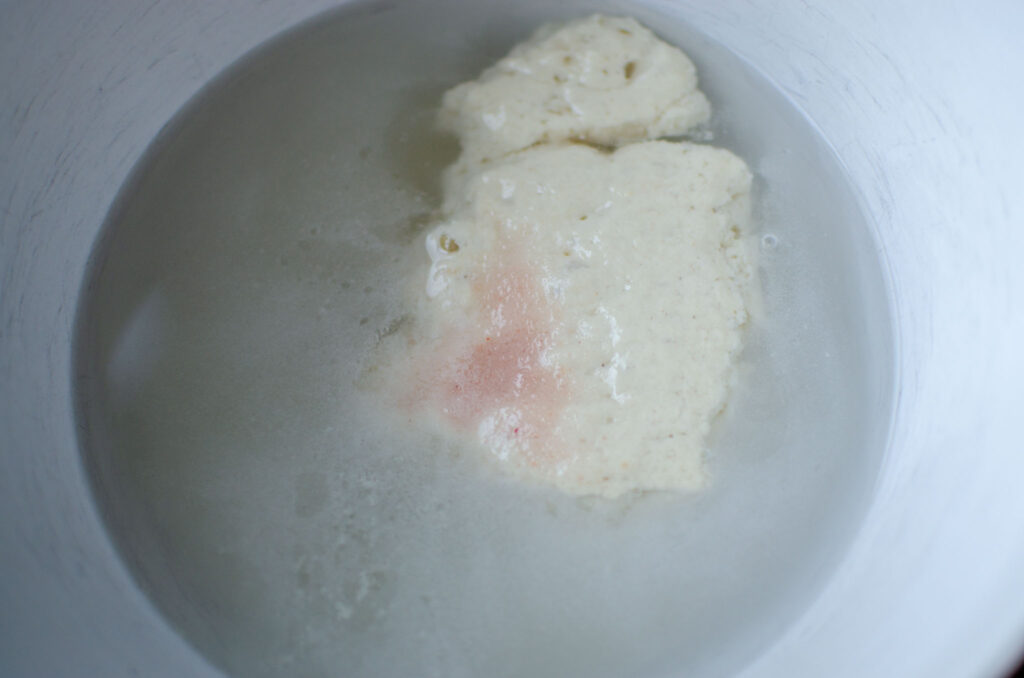
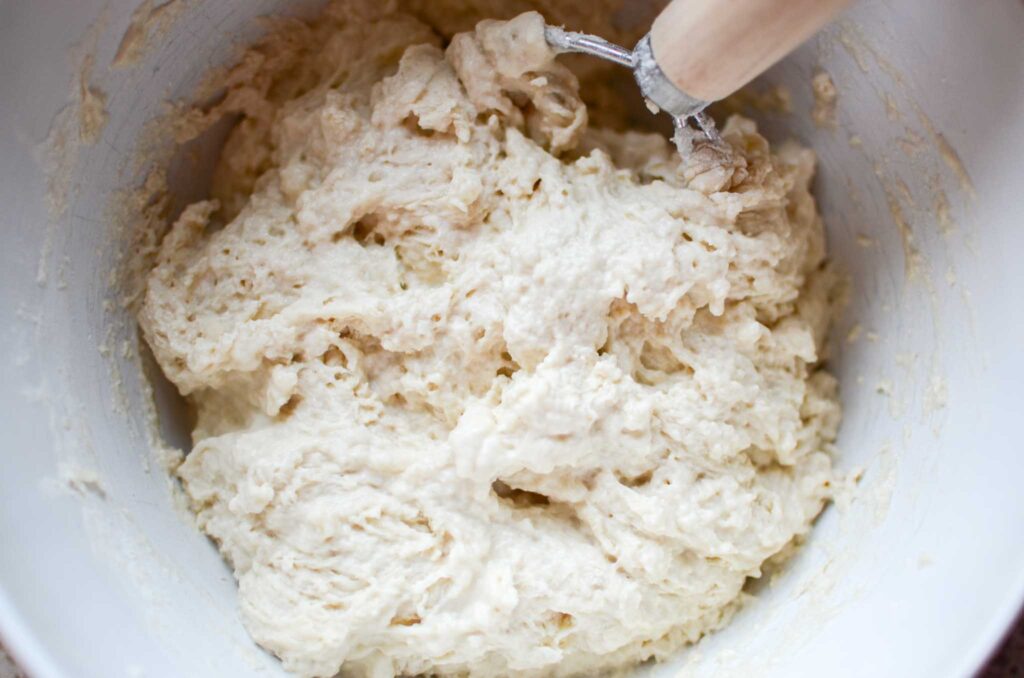
Cover the large bowl with a damp tea towel or a plate and let it rest for half an hour in a warm place, which allows the flour to fully hydrate.
Strengthening Cinnamon Roll Sourdough Focaccia Dough
After the dough has been through the autolyze, it’s ready for the stretch and folds. Working your way around the bowl, grab the dough on the side and lift it straight up, then fold over itself and press into the middle of the dough. Rotate the bowl and stretch and fold the dough again. Repeat 10 – 15 times until the dough starts to feel tough and more resistant.
Allow the dough to rest for 10 minutes and then do another set of stretch and folds. You will do a total of 3 sets of stretch and folds. A cohesive dough forms by the last set of stretch and folds.
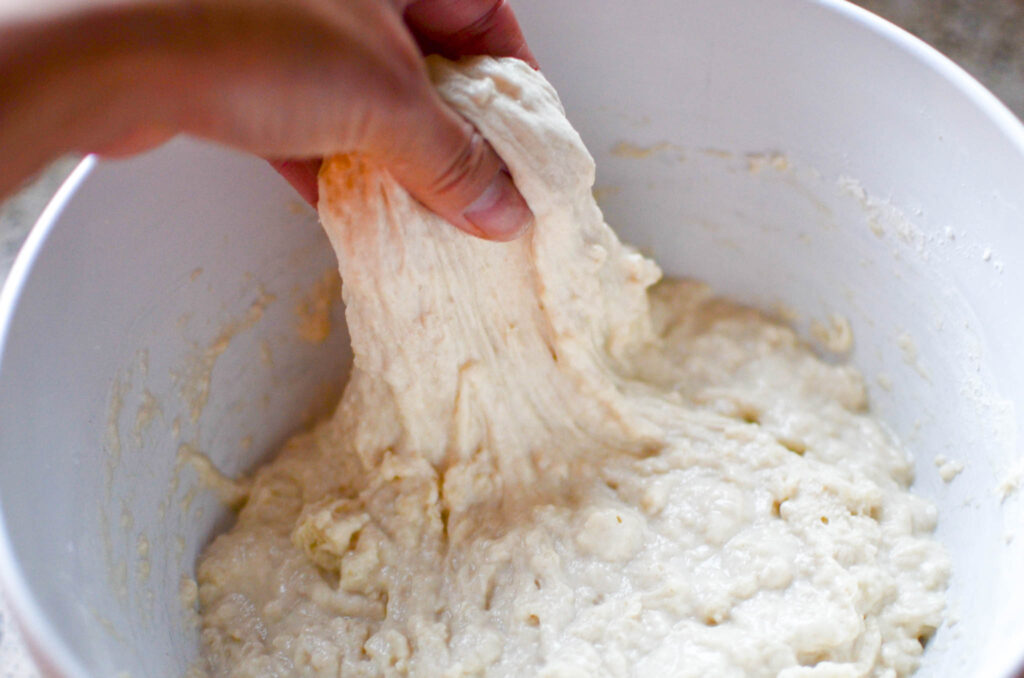
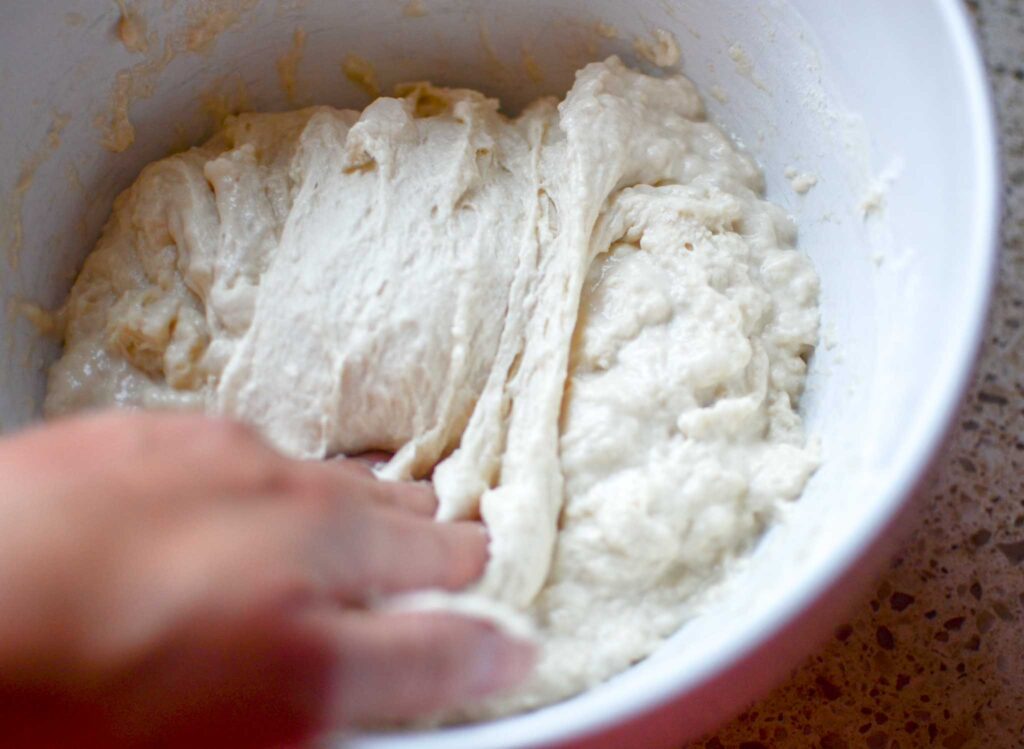
Using wet hands will help to prevent the dough from sticking.
Bulk Rise
Cover the bowl with plastic wrap or a large plate and allow the dough to bulk ferment at room temperature until double in size. During the fermentation process the microorganisms of yeast and lactic acid bacteria break down the starches and produce carbon dioxide gas, giving the dough it’s beautiful rise. I usually let my dough ferment overnight.
The next morning you will see the dough has risen with gorgeous bubbles visible in the dough.
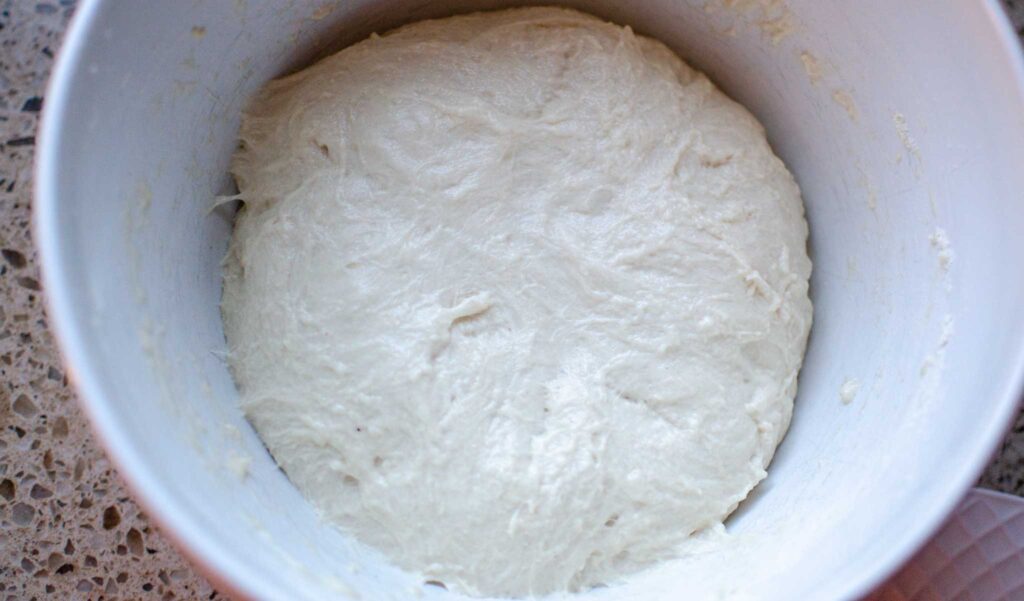
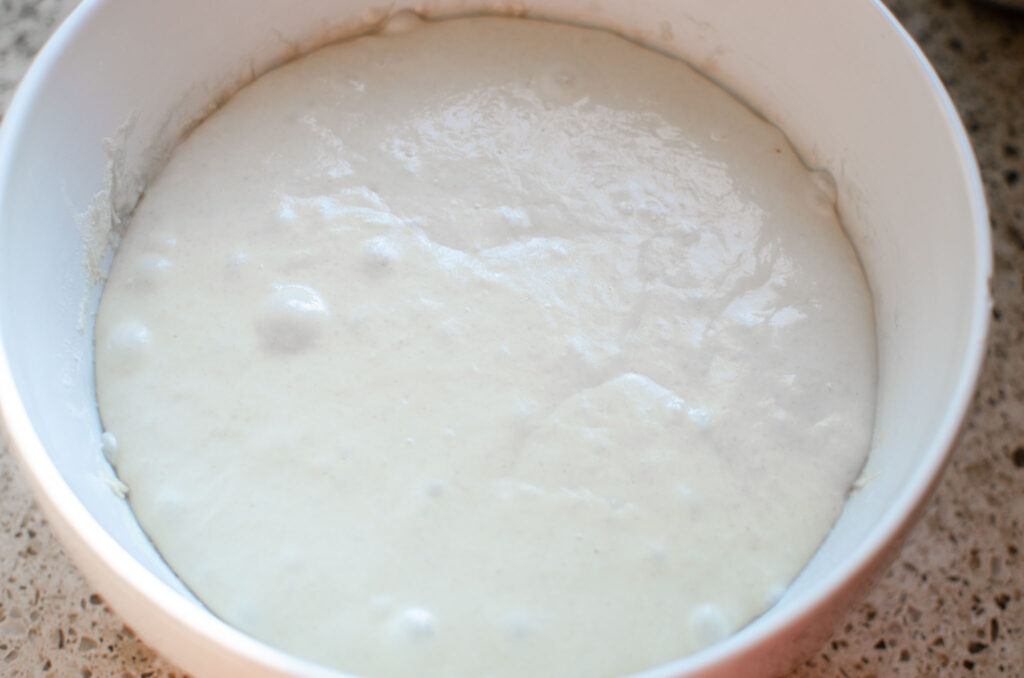
Prepare the baking dish by cutting a piece of parchment paper to lay on the bottom of a 9×13 baking dish. Add a drizzle of olive oil, spreading so it covers the parchment paper.
Shape
Using a dough scraper or rubber spatula and scrape the dough out of the bowl and into the prepared pan. No need for a rolling pin, simply dip your fingers in a little olive oil and pull and shape the dough until it’s stretched to fill the pan.
If the dough feels like it’s pulling back to where you stretched it from, let it rest for 10 minutes to let the gluten relax and try again.
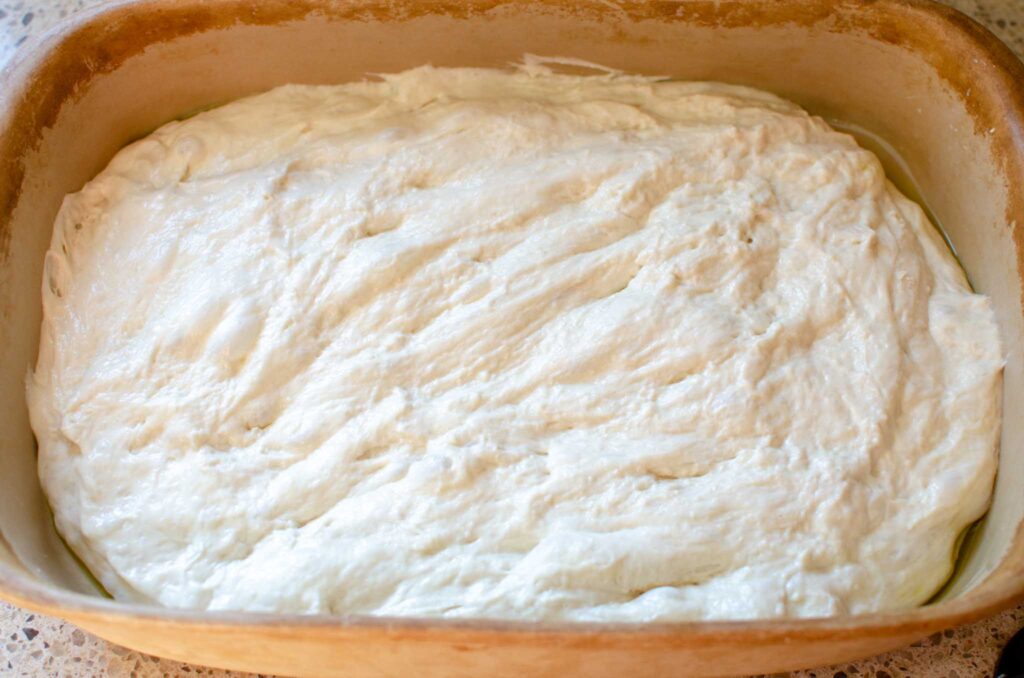
Second Rise
Cover the pan and let the dough rise a second time. Depending on the temperature of your kitchen, this can take 3-4 hours. If your kitchen is really cool, place the pan in the oven with the light on.
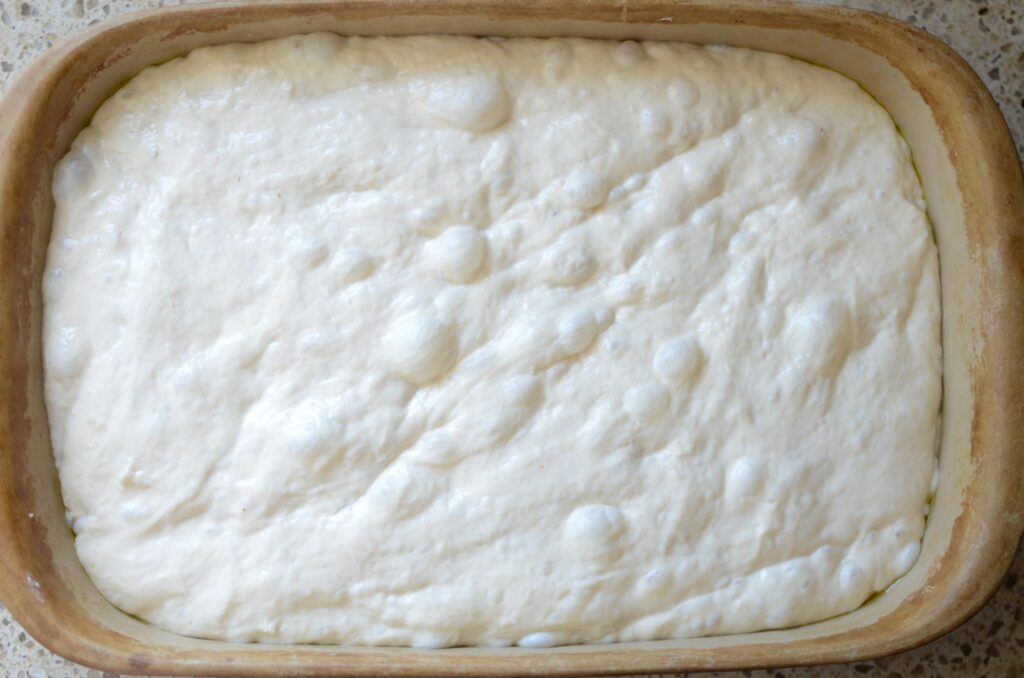
After the dough has doubled in size, preheat the oven to 400 degrees with the rack in the middle position. In a small separate bowl combine the cinnamon and sugar.
Next, dimple the dough with oiled fingers by pressing your fingertips into the dough, and then lifting straight up. Continue until the entire pan is full of deep dimples. This releases some of the air bubbles and prevents the bread from rising too much in the oven. If you were to bake it at this point, the air bubbles would expand and burst, causing the bread to collapse.
Sprinkle the cinnamon mixture evenly over the top of the dough, making sure to reach the edges of the pan. In a small saucepan melt the butter over low heat and pour over the top of the cinnamon sugar mixture. Then press your fingers into the dough again to push the cinnamon mixture into the dough.
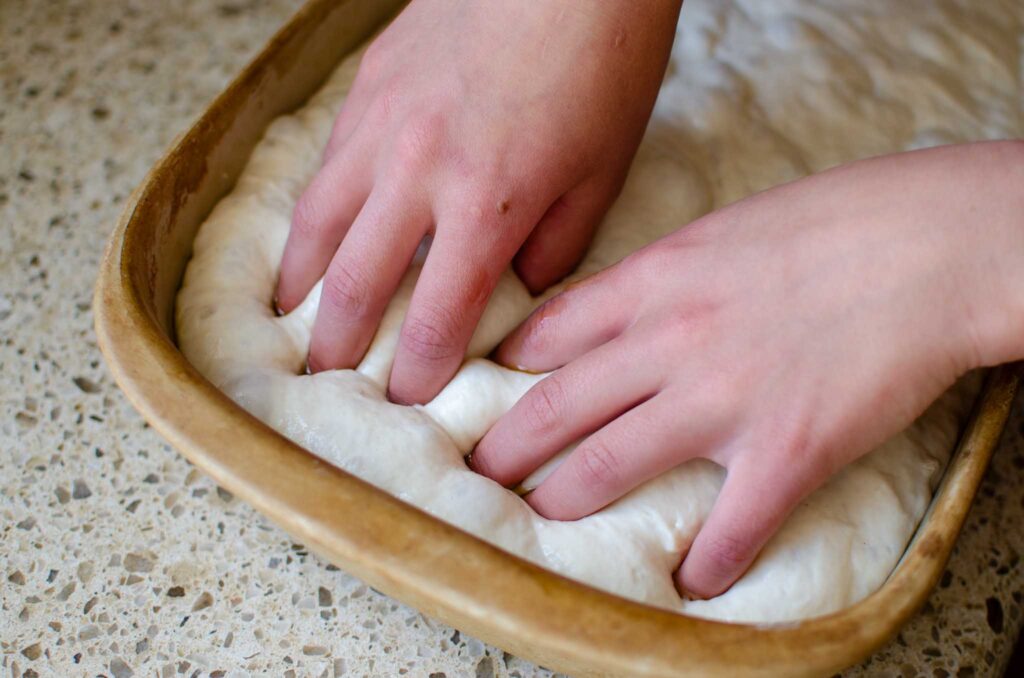
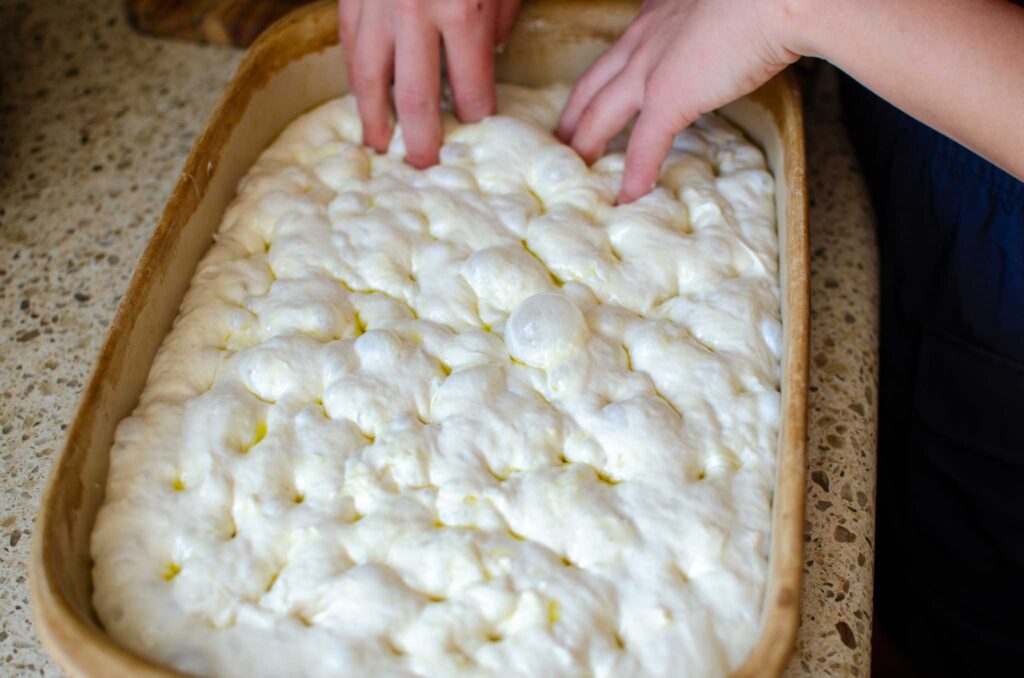
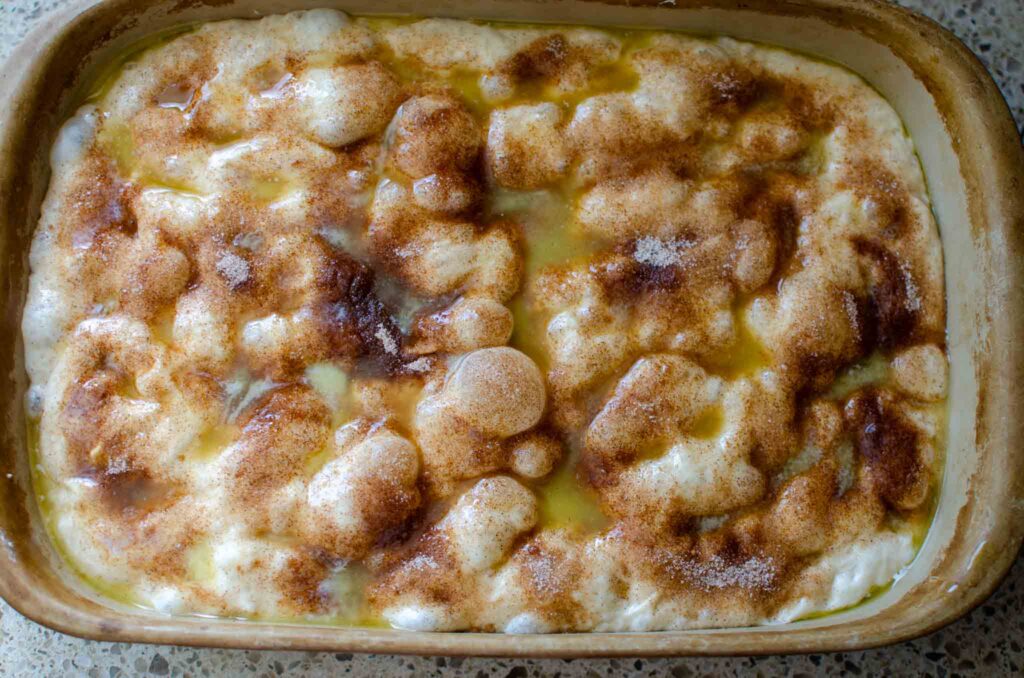
Bake
Bake for 30 minutes. The top of the cinnamon roll focaccia sourdough will be golden brown with an internal temperature of 200 degrees. Remove the bread from the pan soon after it comes out of the oven and place it on a cooling rack to prevent the focaccia bread from getting soggy. Let the bread cool completely,

Sample Baking Schedule
Day 1
4 pm – Feed your sourdough starter. I use a ratio of 1:1:1.
9 pm – mix the sourdough focaccia dough together
9:40 pm – Strengthen the dough with a series of stretch and folds with 10 minute intervals between sets.
10 pm – Cover the bowl and leave sit at room temperature to bulk ferment.
Day 2
7 am – Shape sourdough cinnamon roll focaccia bread dough in the prepared pans and cover for it’s second rise.
9:45 am Preheat oven to 400 degrees.
10 am – Add sugar, cinnamon, and butter, and dimple and bake.
How to Store Sourdough Focaccia Bread
Like many bakes, this sourdough cinnamon sugar focaccia is the best the day it’s baked. Store leftovers in a bakery-style box or cardboard box lined with wax paper at room temperature for up to 3 days. It’s best to not use an airtight container. Because the sourdough focaccia has a high amount of moisture, the water evaporates into the container and the sugar takes on a wet texture.
Notes
- The focaccia is nice and tall when baking in a 9 x 13 baking dish. For a flatter focaccia that feeds a crowd, use a 12 x 17 baking sheet pan or split between two 9 x 13 baking pan.
- This bread is perfectly sweet, however, you can make it more decadent by topping it with tangy cream cheese frosting.
- Substitute brown sugar instead of granulated sugar in the cinnamon topping mixture for an added depth of flavor.
I’d love to hear from you! Please leave a comment and rate the recipe. Tag photos #Lockremhomestead over on Instagram when you share pictures of your Sourdough Cinnamon Roll Focaccia Bread!
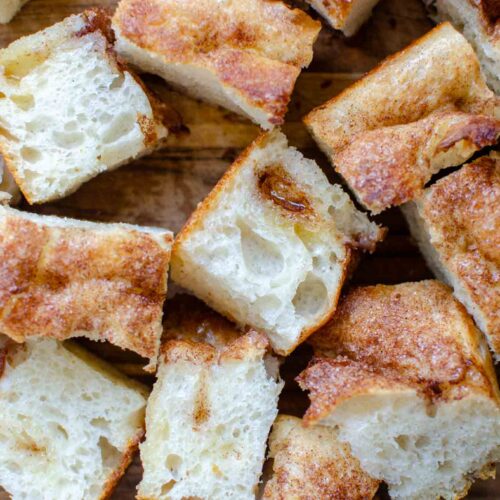
Sourdough Cinnamon Roll Focaccia Bread Recipe
Want to Save This Recipe?
Enter your email & I’ll send it to your inbox. Plus, get great new recipes from me every week!
By submitting this form, you consent to receive emails from Lockrem Homestead
Ingredients
Sourdough Cinnamon Roll Focaccia Dough
- 100 g active sourdough starter
- 400 g water
- 50 g sugar
- 10 g salt
- 500 g bread flour
- 30 g olive oil Do not add to the dough! For shaping only
Cinnamon Sugar Topping
- 1 tsp cinnamon
- 50 g sugar
- 56 g melted butter
Instructions
Mixing the Dough
- Mix the sourdough focaccia dough by adding the active sourdough starter, warm water, sugar, and salt to a large mixing bowl. Use a Danish dough whisk to stir lightly, breaking up the starter into the water and distributing the salt and sugar. Next, add in the bread flour and mix until it's completely incorporated. Cover the large bowl with a damp tea towel or a plate and allow it to rest for a half an hour.
Strengthening the Dough
- After the dough has been through the autolyze, it's ready for the stretch and folds. Working your way around the bowl, grab the dough on the side and lift it straight up, then fold it over itself and press it into the middle of the dough. Rotate the bowl and stretch and fold the dough again. Repeat 10 – 15 times until the dough starts to feel tough and more resistant. Allow the dough to rest for 10 minutes and then do another set of stretch and folds. You will do a total of 3 sets of stretch and folds. The dough will go from being rough and shaggy to smooth and elastic by the last set of stretch and folds. Using wet hands will help to prevent the dough from sticking.
Bulk Rise
- Cover the bowl with plastic wrap or a large plate and allow the dough to bulk ferment at room temperature until double in size. During the fermentation process the microorganisms of yeast and lactic acid bacteria break down the starches and produce carbon dioxide gas, giving the dough it's beautiful rise. I usually let my dough ferment overnight.The next morning you will see the dough has risen with plenty of gorgeous bubbles visible in the dough. Prepare the baking dish by cutting a piece of parchment paper to lay on the bottom of a 9×13 baking dish. Add a drizzle of olive oil, spreading so it covers the parchment paper.
Shape
- Using a dough scraper or rubber spatula and scrape the dough out of the bowl and into the prepared pan. No need for a rolling pin, simply dip your fingers in a little olive oil and pull and shape the dough until it's stretched to fill the pan. If the dough feels like it's pulling back to where you stretched it from, let it rest for 10 minutes to let the gluten relax and try again.
Second Rise
- Cover the pan and let the dough rise a second time. Depending on the temperature of your kitchen, this can take 3-4 hours. If your kitchen is cool, place the pan in the oven with the light on.After the dough has doubled in size, preheat the oven to 400 degrees with the rack in the middle position. In a small separate bowl combine the cinnamon and sugar. Next, dimple the dough with oiled fingers by pressing your fingertips into the dough, and then lifting straight up. Continue until the entire pan has been dimpled. This releases some of the air bubbles and prevents the bread from rising too much in the oven. If you were to bake it at this point, the air bubbles would expand and burst, causing the bread to collapse. Sprinkle the cinnamon mixture evenly over the top of the dough, making sure to reach the edges of the pan. In a small saucepan melt the butter over low heat and pour over the top of the cinnamon sugar mixture. Then press your fingers into the dough again to push the cinnamon mixture into the dough.
Bake
- Bake for 30 minutes. The top of the bread will be golden brown with an internal temperature of 200 degrees. Remove the bread from the pan soon after it comes out of the oven and place on a wire rack to prevent the focaccia bread from getting soggy
Storage Instructions
- Like many bakes, this sourdough cinnamon sugar focaccia is the best the day it's baked. Store leftovers in a bakery-style box or cardboard box lined with wax paper at room temperature for up to 3 days. It's best to not use an airtight container. Because the sourdough focaccia has a high amount of moisture the water evaporates into the container and the sugar takes on a wet texture.

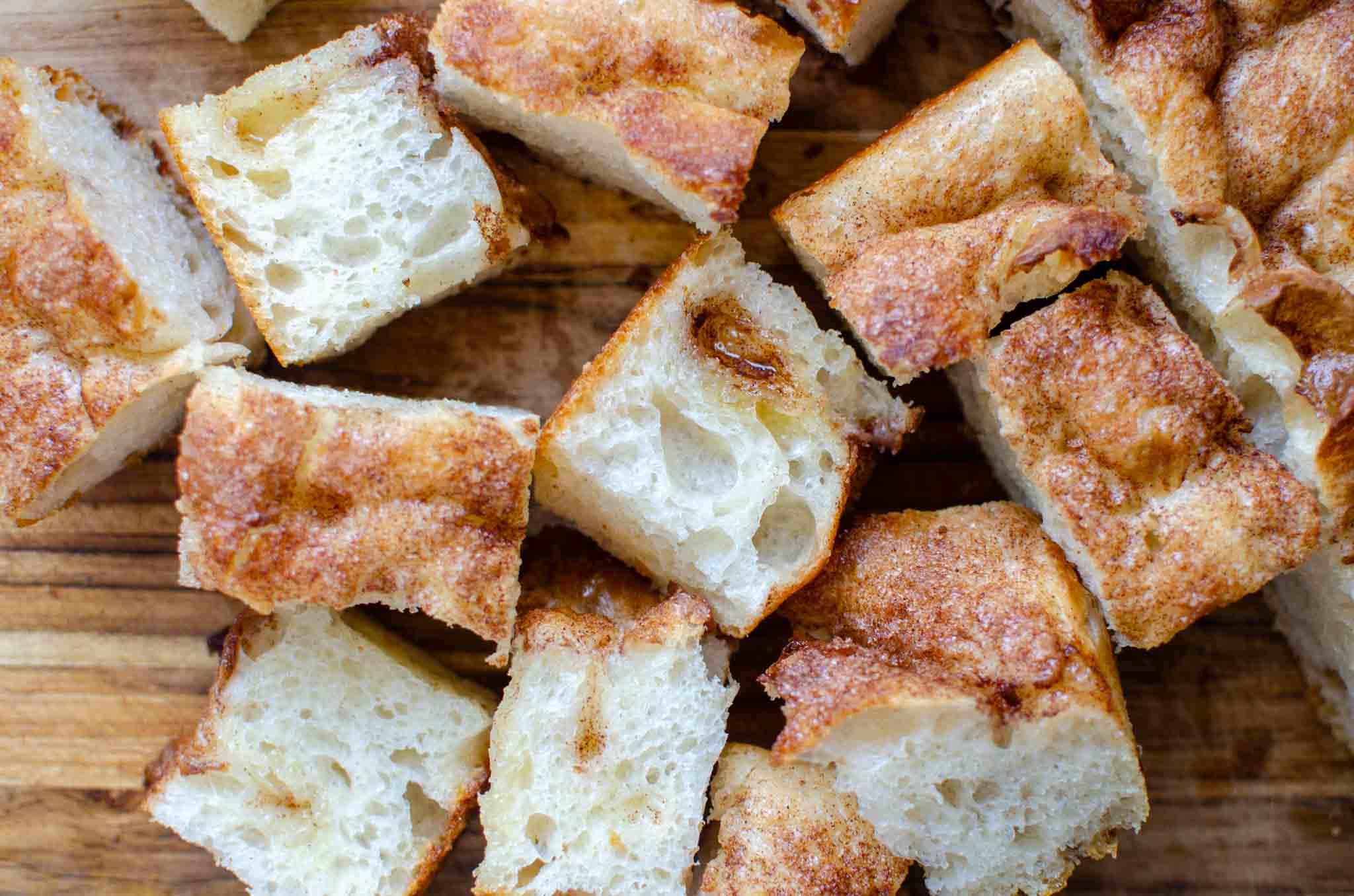

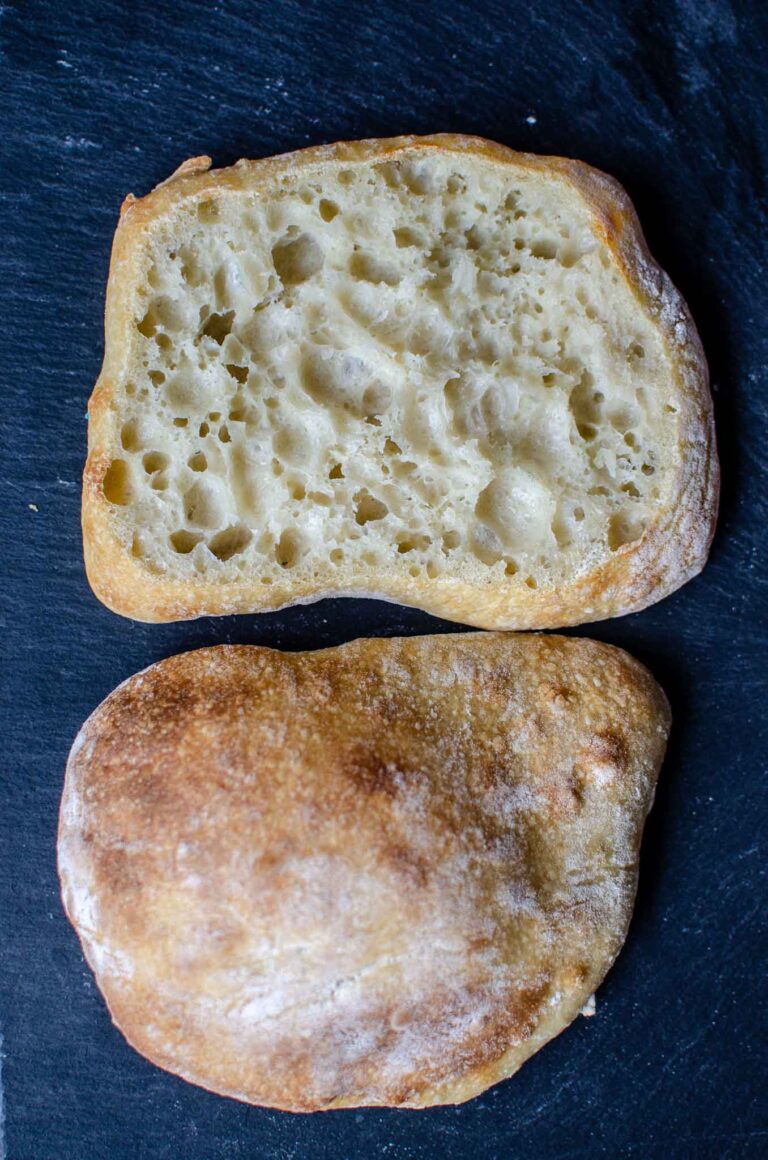
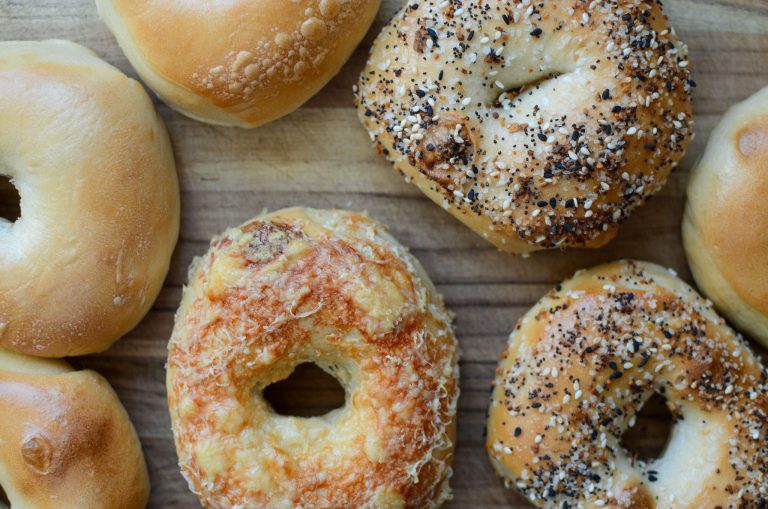
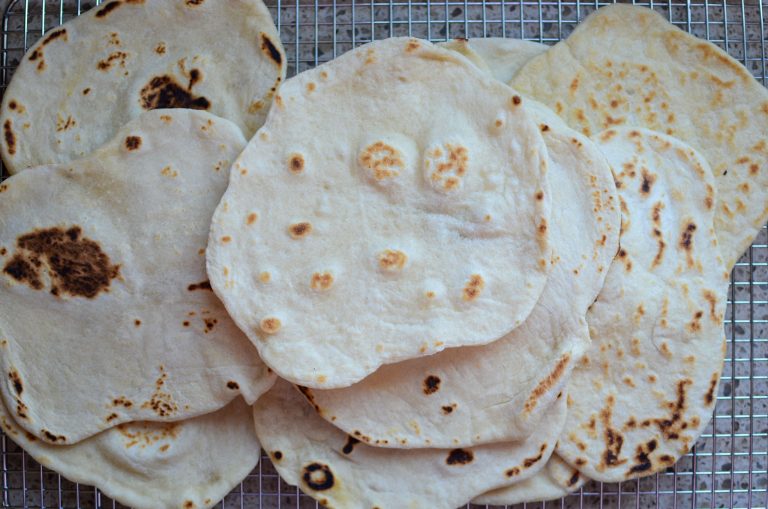
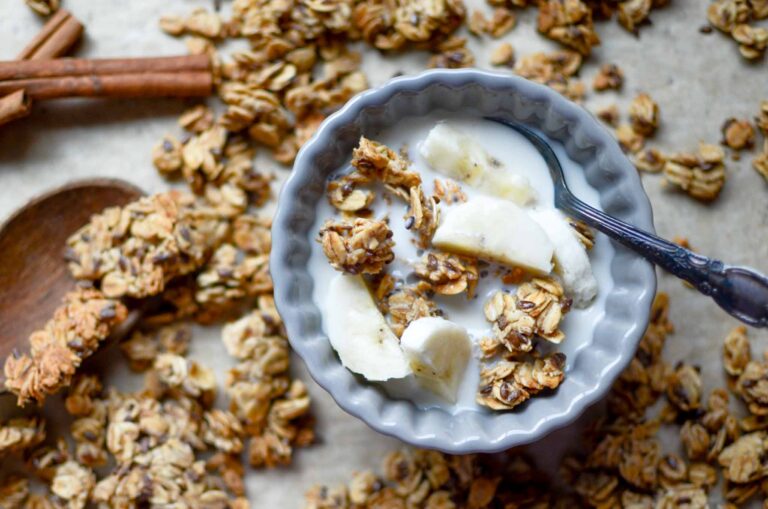
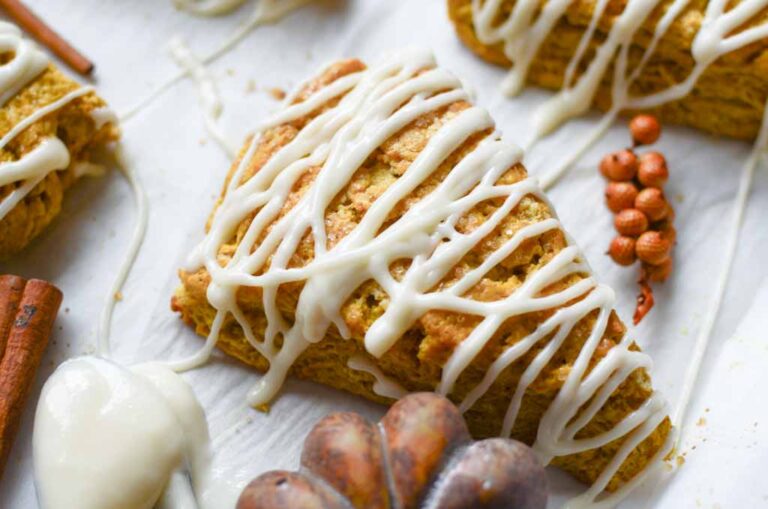
I know you’re going to LOVE this recipe! It’s one of our family favorites. Plus, don’t forget that you can leave a comment or ask me a question here, and I’ll get back to you!